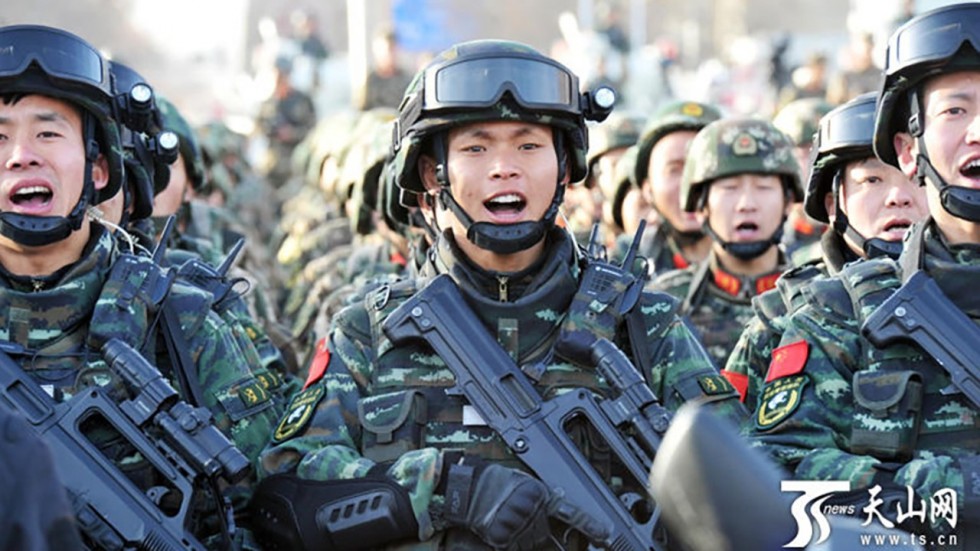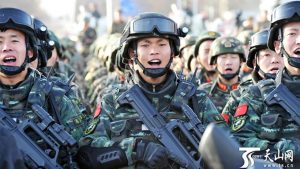Why Xi Jinping’s belt and road rhetoric of inclusion rings hollow among the Muslim Uygurs of Xinjiang

South China Morning Post, 7 June 2017

By Michael Clarke — President Xi Jinping’s (習近平) Belt and Road Initiative seeks to make China the hub of trans-Eurasian economic connectivity . It will “benefit people across the world”, based as it is on the “Silk Road spirit” of “peace and cooperation, openness and inclusiveness, mutual learning and mutual benefit”, as Xi told Beijing’s Belt and Road Forum last month.
While such rhetoric may boost China’s diplomatic position, it may ring hollow in its own Eurasian frontiers, such as Xinjiang.
Just this week, Xinjiang media reported the staging of mass “anti-terror rallies” involving six million people. This follows coordinated “anti-terrorism oath-taking rallies” in February by thousands of security forces in Kashgar and Khotan, and the provincial capital, Urumqi, where regional party boss Chen Quanguo exhorted forces to “bury the corpses of terrorists in the vast sea of a people’s war”.
Thus, as Xi hails the openness and inclusiveness of the belt and road, a pervasive “security state” has arguably enveloped Xinjiang.
Xinjiang’s geopolitical position – bordering Russia, Mongolia, the Central Asian republics, Afghanistan and Pakistan – has always made Beijing vigilant about, and apt to respond with a heavy hand to, anti-state unrest. However, the region’s role as a hub for three of the six belt and road economic corridors linking China with Central Asia, South Asia and the Middle East, has elevated “stability” to a strategic priority.
Under Xi’s watch, Xinjiang has seen long-standing strategies of control bolstered by innovations to extend state monitoring, including “comprehensive supervision” via the Skynet electronic surveillance system in major urban areas, GPS trackers in all vehicles, and provision of DNA samples and biometric data for passports.
The centrality of Islam to Uygur identity is cited as a core obstacle to stability. This has resulted in the systematic regulation of religious practice, through new rules for imams and religious institutions, guidelines to identify “deviant” behaviour, restrictions on beards or the wearing of burkas and hijabs, and campaigns against religious education. Expanded surveillance is displayed most overtly through mass “anti-terrorism” rallies and enhancement of the capabilities of security forces, including through the deployment of drones.
The aim is to combat the appeal of the “powerful hallucinogen” of extremist ideology believed to be at the root of Uygur terrorism, such as the March 2014 Kunming railway station attack and localised incidents involving “knife-wielding terrorists”. Proof of Uygurs joining Islamic State militants in Iraq and the al Qaeda-aligned Turkistan Islamic Party in Syria has also heightened threat perceptions.
Yet questions remain as to the level of connection between Uygur militants in Syria and Iraq, and terrorism in Xinjiang. For instance, a February 14 knife attack by three Uygurs near Khotan appears to have been a reaction to efforts by the authorities to punish a Uygur family for running an “underground” Islamic school.
Something of a self-fulfilling prophecy is at play here. Within Xinjiang, the pervasive instruments of surveillance and control have reinforced long-standing Uygur perceptions of marginalisation and increased the potential for the radicalisation that Beijing has long feared. Externally, the crises in Syria and Iraq have provided conditions for the consolidation of Uygur militant linkages to jihadist groups.
The belt and road agenda to facilitate trans-Eurasian connectivity thus holds the potential to become a double-edged sword in Beijing’s quest for stability in Xinjiang.
Dr Michael Clarke is associate professor at the National Security College, Australian National University. He is the author of Xinjiang and China’s Rise in Central Asia: A History



